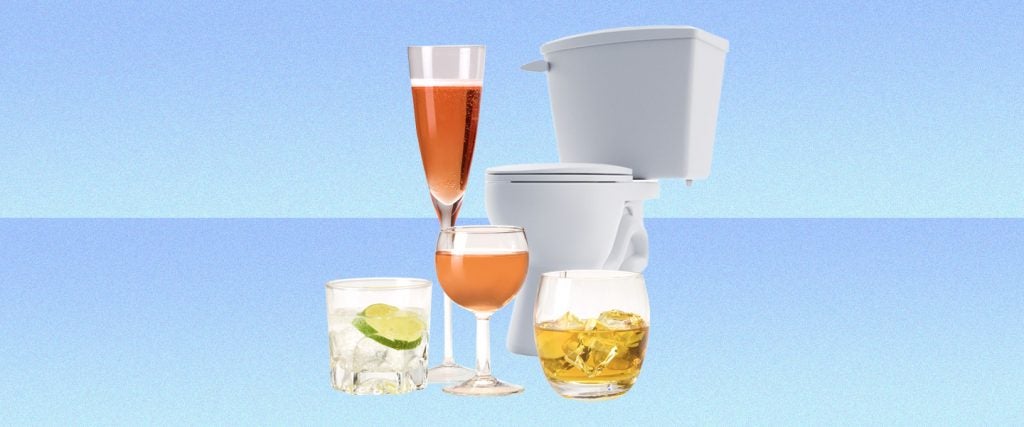You’ve got to hand it to the French — they have a way of composing words that can endow even getting wasted with the essence of sophistication. Consider apéritifs and digestifs. Each is assigned a precise purpose within a meal — the apéritif stimulates its drinker’s appetite, while the digestif aids their digestion. And when the meal concludes, most casual observers will gloss over the fact that their friends are tipsy due to the fact that said tipsiness was achieved in a respectable manner.
So let’s peel back a few layers of the proverbial onion to see if there’s any biological justification behind the dubious reasoning that the shot of brandy you swallowed at the bar prior to being seated at your table is somehow different in function from the same brandy you slowly sip after your plate has been cleared.
What is a digestif anyway?
As I’ve already stated, a digestif is imbibed after a meal to aid the digestion of food. I’d be willing to take the experts at their word, but the only feeling an alcoholic drink has been known to administer to my body involves the buildup of stomach acid, and the corresponding heartburn. So please forgive me if I’m not all that willing to accept the self-proclaimed booze experts at face value.
Without getting bogged down into a discussion over the purity of the digestif label, we can begin with what was once supposed to be universally true of digestifs — they were intended to contain an herbal additive that was desirous for its ability to settle the stomach, somewhat along the lines of a medicinal tonic. I suppose it’s logical to ask why it was necessary to include an intoxicating level of alcohol in a stomach-settling, post-meal tonic, but I already know the answer: Human beings will search for any excuse to get well and truly bollocksed, even if it’s in the ostensible service of escorting a steak through their bowels.
By adopting the definition for a digestif that stresses its herbal attributes, several herb-infused liqueurs immediately qualify. This includes regional favorites like Amaretto, Bénédictine, Drambuie (my favorite) and Grand Marnier.
Some of the publicly known herbal ingredients of Bénédictine include juniper, saffron, mace, aloe, arnica, lemon balm, tea, thyme, coriander, clove, honey, cinnamon and nutmeg. Collectively, these herbs all have a wide range of attributes that are advertised as beneficial, and common amongst them are digestive improvement, antioxidant properties, anti-inflammatory effects and immunity enhancement. This all sounds appealing, but many of these claims require far greater study in order to be authenticated.
Moreover, the definition of a digestif has expanded to apply to any wine consumed after a meal as long as that wine is fortified and sweet (e.g., sherry, port, madeira), any distilled liquor as long as it’s consumed neat or any cocktail that mixes a distilled liquor with an herbal liqueur.
Will a digestif actually improve my digestion?
The answer to that question hinges on a lot of behavioral questions that you’ll need to provide the answers to, but they can all be distilled down to two key queries: 1) How do you typically go about consuming alcohol; and 2) what do you mean by “digestion”?
If we presume that you’re a three-drink kind of guy, let’s assume that instead of ordering a pre-meal glass of wine — an aperitif, as it were — you go full Pirates of Penzance and order up a glass of the finest sherry. There isn’t any food already lingering in your system in need of digestion, and you’ve replaced a 120-calorie glass of traditional wine with 200 calories of something far sweeter, and that you’re likely to quaff down more quickly.
Under ordinary circumstances, the mild bitterness of ordinary wine may have caused you to sip it more slowly, but now your glass is already empty. Might as well reload! You order up a second glass of sherry to accompany your meal. At this stage, you’re 160 calories up from where you’d typically be, and now it’s time for dessert. In the cocky-masquerading-as-classy mannerism of a digestif guzzler, you chuckle at the dessert menu’s offerings of double chocolate ice cream cake and crème brulée, and flip it over to peruse the list of dessert drinks. That three-ounce pour of Kahlua sounds simply divine. You request it without thinking twice about the fact that another 200-plus calories of alcohol and sugar will soon be entering your system.
Now, even if there are some herbs lurking within the Kahlua that are easing some of the discomfort of your digestion, your body is still prioritizing the breakdown of alcohol into acetate, which is a substance it perceives to be toxic. In order to eliminate the acetate, you’re suppressing the breakdown of other macronutrients into energy, which can result in the accelerated conversion of your non-alcoholic calories into fat.
Can you put that in simpler terms?
Sure. If the easy-drinking nature of digestifs results in you ultimately consuming more alcohol, you may feel less indigestion, but you’re also likely to take in more alcohol along with more calories in general. The result? A larger waistline.
My advice: Drink responsibly and pop a Pepcid after your meal. It may taste chalky, but at least that flavor isn’t followed by the unmistakable aftertaste of delusion.

